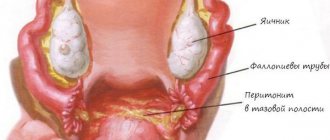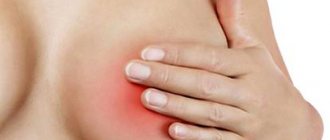Adhesions in the intestines, adhesions in the pelvis, adhesive disease of the abdominal cavity ... Very painful phenomena that cause a lot of discomfort and lead to serious complications. Today we will talk about the causes of their occurrence, symptoms and signs, conservative and surgical treatment, and, of course, the prevention of adhesions. After all, it is always easier to prevent a disease than to cure it later when everything has already started.
Adhesions are connective tissue that forms between organs, subsequently leading to their fusion. If you do not resort to timely treatment, the adhesive process can lead to very serious consequences for a person.
Adhesive process
To begin with, it’s worth talking about what kind of disease this is. And define the word adhesions (what is it). This disease is characterized by the formation of the finest fibers or films in the human body. They glue closely located organs together. This disrupts the functioning of an individual human system.
It is worth noting that the adhesive process most often affects the fairer sex. In them, this disease occurs in the small pelvis. Despite this, the disease can appear in the digestive, circulatory, cardiac and other systems of the body.
Diagnostics
It is almost impossible to see adhesions. They are so thin and transparent that human vision is simply beyond their power. However, the presence of the disease can be suspected by the incorrect location of the abdominal organs. Often the parts glued together are displaced.
The adhesive process can be diagnosed by manual examination or during ultrasound diagnostics. The gynecologist may suspect films located in the pelvis during an examination on the chair. The diagnosis is confirmed after an ultrasound procedure.
A disease such as adhesions has a variety of causes. Let's look at them in as much detail as possible.
Symptoms, causes and methods for eliminating adhesions on the ovaries
Every woman dreams of becoming a mother.
However, it happens that the presence of adhesive formations in the ovaries becomes an obstacle to her happiness. Often, adhesions form between the ovaries and the uterus, its ligaments, fallopian tubes and intestinal loops. With adhesive formations, conception, ovulation and the movement of a fertilized egg through the fallopian tubes is almost impossible. This is how infertility appears, which becomes a big problem for many couples. That is why you should know all the factors, symptoms of ovarian adhesions and treat them immediately.
Inflammatory process
Perhaps the most common cause of the disease is inflammation. During illness of a particular organ, it increases in volume and begins to secrete fluid. It is this mucus that over time turns into the thinnest threads, and subsequently becomes a dense film that connects the organ with the peritoneum or another part of one or another body system.
As mentioned above, women are most often affected by this disease. In them, the cause of adhesions in the pelvic area can be metritis (inflammation of the uterus), salpingitis (inflammation of the fallopian tube), adnexitis (inflammation of the ovaries). It is worth noting that films are formed precisely in the organ where the inflammatory process occurred. However, with a severely advanced disease, fluid can also spread to neighboring organs.
Spikes. The influence of the state of the pelvic organs on pregnancy and childbirth
If before pregnancy a woman had an inflammatory process in the pelvis (appendectomy, inflammation of the intestines, ovaries), then adhesions may form on the broad ligament of the uterus, or its fibers become highly fibrotic. Unilateral adhesions can lead to lateroflexion (rotation) of the uterus. Bilateral adhesions lead to limited mobility of the uterus and can contribute to the threat of miscarriage and spontaneous miscarriage.
The quality of the birth process is associated not only with the quality of uterine contraction, but also with its position and mobility in the pelvis. Factors contributing to the abnormal position of the uterus include adhesions, decreased elasticity of the ligaments, dysfunction of the pelvic floor muscles, blockage and limited mobility at the level of the pelvic joints.
Normally, the broad ligaments of the uterus are extremely mobile.
Under physiological conditions, mechanical mobility of the pelvis ensures the return of internal organs to their normal position after childbirth. If there is a restriction in the mobility of the bone structure of the pelvis (especially the sacrum and pubis), displacement of the internal organs may occur. This causes tension in the fibers to compensate for which fibrosis and corresponding symptoms occur in the form of impaired urination, defecation, and more.
In the presence of pathological tractions and fibrosis of the uterocruciate ligaments, cervical mobility, innervation and blood circulation at this level are disrupted. The process of cervical dilatation is closely related to the condition of the uterocruciate ligaments.
When the mobility of the skeletal system is impaired or the muscles or ligaments become fibrotic, the woman’s body mechanics change, which causes problems during pregnancy and childbirth. Muscle ligaments form a system of mutual tension - tensegrity. Mobility at the level of the muscular layers of the uterus is also important.
All muscle layers of the body and neck should slide well against each other. This is important for the correct symmetrical growth of the uterus during pregnancy and its coordinated contraction during childbirth. If the layers of the uterus are mobile, then its contraction during childbirth occurs productively and the child moves evenly along the birth canal. The sliding of the layers ensures normal blood circulation and innervation.
With pathology of the round ligaments of the uterus, we can feel uneven tension either in the inguinal ring or at the level of the pubis. Often pregnant women have complaints of pain in the groin (usually unilateral), associated with tension in the round ligaments of the uterus. Their uneven tension leads to asymmetry in the position of the uterus and rotation. Written based on the book by I.A. Egorova, Ya.L. Kuznetsova "Osteopathy in obstetrics and pediatrics."
Preparing for pregnancy is a rather long process and includes both physical and psychological preparation.
Visceral abdominal massage will help remove adhesions, restore the mobility of organs and bone structures, and improve blood supply and innervation.
Working with the subconscious prepares a woman for pregnancy and the birth process. Removes blocks of the unconscious for conception and pregnancy.
Both psychological and physical preparation can take a long time, depending on the initial state of the woman, so you need to start as early as possible.
In case of problems with conception and miscarriage, abdominal massage can also help. Adhesions can block internal processes, “like traffic jams,” and a simple illness in the past will result in the impossibility of conception. Just like psychological unpreparedness for pregnancy, infantilism will not allow a woman to become pregnant despite all the positive conditions.
Surgical operations
Almost always, after such manipulations, a person encounters a phenomenon called adhesions. You already know what it is. Why do these films form after such types of treatment?
Any operation is accompanied by blood loss. It can be moderate or abundant. After completing the manipulation, the doctor always performs a toilet of the abdominal cavity, clearing it of any remaining blood and mucus. But during the healing period of wounds and sutures, leakage of ichor, drops of blood, or mucus may occur. This is what causes the formation of adhesions. It is worth noting that pathology develops precisely in the organ on which the operation was performed.
For example, when removing the appendix or undergoing intestinal surgery, adhesions form there. During heart surgery, thin films may appear between the chambers. During surgery on the female genital organs, the adhesive process affects this particular system. The wider the surgical incision and the longer the operation, the greater the likelihood of the disease occurring.
Alternative to surgery
To treat adhesions after laratoscopy, the gynecologist may prescribe gynecological massage, which requires a lot of the doctor’s time. Therefore, not every gynecologist will want to prescribe it. Gynecological massage lasts about 30 minutes and requires preliminary anesthesia. Anti-adhesion course – minimum 10 sessions. Massage with both hands, with the fingers of one hand acting from the side of the vagina, and the fingers of the other hand from the side of the abdomen.
The positive effect of gynecological massage is as follows:
- rupture of adhesions
- elimination of uterine bending
- improving blood circulation and lymphatic drainage in the pelvic organs
- strengthening the abdominal muscles and pelvic floor.
If a woman is not sexually active or suffers from infertility, uterine fibrosis, amenorrhea, salpingitis, muscular hypotonia of the uterus, uterine prolapse, as well as after an abortion or difficult childbirth, gynecological massage is indicated and very useful.
We thank the obstetrician-gynecologist of the Kyiv maternity hospital No. 3 Sergei Nikolaevich Baksheev for his help in preparing the material.
Internal bleeding
During bleeding, adhesions may form inside the abdominal cavity. What it is? Let's consider this process.
Often, when an organ ruptures or is damaged, blood or a similar fluid is released. It is this that promotes the formation of threads, which subsequently become films. It is worth noting that every internal bleeding must be treated surgically, but this does not guarantee that the disease will not affect the body.
Symptoms of the disease
Depending on where the adhesions appear, symptoms may vary. Most often the disease manifests itself as follows:
- shortness of breath and difficulty breathing (with the formation of films on the area of the respiratory system);
- indigestion and pain in the abdominal cavity (with adhesions on the stomach, liver or gall bladder);
- abnormal stool and pain during bowel movements (with intestinal adhesions).
Adhesive disease of the pelvis is characterized by the appearance of the following symptoms:
- intermenstrual bleeding;
- cycle disorders;
- the appearance of nagging, aching or sharp pain in the lower abdomen;
- inability to get pregnant or attachment of the fertilized egg in an unusual place;
- fever, nausea or vomiting.
Symptoms
Often the pathology passes without obvious symptoms. The first symptoms may appear several years after the start of the process.
Adhesive disease manifests itself:
- nagging pain in the lower abdomen, radiating to the lower back;
- menstrual irregularities;
- painful periods;
- unpleasant sensations during physical activity, sexual intercourse;
- intestinal disorders;
- temperature rise.
The pain syndrome during the disease is mild. It manifests itself as a dull pain covering one side. A change in the nature of discomfort indicates complications of the adhesion between the uterus and ovary.
In this case, the pain is severe, because the patency of the fallopian tubes is impaired. As a result, the menstrual cycle is disrupted. The duration of the delay is 2-3 months.
The adhesive process is characterized by a yellowish-green discharge. A bloody “spot” may appear.
Often, symptoms of adhesive disease occur after hypothermia or a course of physiotherapeutic procedures.
Conservative way
Adhesions on the ovaries, fallopian tubes, or those located in other human organs can be treated with medications. It is worth noting that this method of correction is most often chosen when the symptoms of the disease are not too pronounced and do not cause discomfort to the patient.
Also, a similar technique is chosen when it is necessary to prevent the formation of thin threads and films between organs. This therapy is prescribed in conjunction with the treatment of inflammation, as well as after surgical operations.
Most often, the patient is prescribed injections of the drug Lidaza or Longidaza. When treating pelvic adhesive disease in women, the drug Longidaza is more effectively used in the form of rectal suppositories.
In addition, the doctor may recommend physical therapy. During manipulation, a special beam is directed to the area where adhesions are formed, which stops the growth of new tissue and prevents the formation of adhesions. Such preventive treatment is always prescribed after correction of inflammatory diseases.
Why do adhesions form?
Tissue fusion is an adhesive process; it is a minor defect of the reproductive system, but it more often than other factors leads to infertility. There are:
- connective tissue adhesions after surgery;
- adhesions of the fallopian tubes.
But is it possible to get pregnant if there are adhesions?
There is no clear answer here, since their formation is difficult to diagnose and treat. But even after an actually confirmed adhesive process, for example, after an unsuccessfully tested cesarean section, women became pregnant and gave birth to children. To eliminate the causes and diagnose this pathology, the woman will undergo a series of examinations. Adhesive growths, like a web, can cover the abdominal cavity and pelvic organs. The thinnest passages are the fallopian tubes; if their patency is impaired, conception is difficult. If they also involve other organs, then the ovaries and uterus cannot fully perform their functions, even if there is a 1 in 100 chance of fertilization.
Connective tissue growths may involve the rectum and bladder. Most likely, this process was influenced by scars after surgery. Normally, there is even a slight adhesive process; it does not interfere with the functioning of the gastrointestinal tract and other nearby organs, including the reception of the egg by the fallopian tubes and the penetration of active sperm into them.
Important: How to get pregnant with adhesions? It’s very simple - there are no special obstacles if the adhesions in the abdominal cavity are only on the right or left.
Adhesions are just threads and films. These are some kind of “cords” of connective tissue, reminiscent of the protein flagellum that holds the yolk of a chicken egg, which many have seen. The problem is that in the human body they are denser, tougher and stronger than in a raw egg.
This is a pathologically growing connective tissue that spreads from one organ to another. When pelvic adhesions are discovered that prevent conception, they try to eliminate them. For what? Allow patency on at least one side so that it is possible to get pregnant with adhesions. In fact, these “threads” compress the narrow fallopian tubes and create an obstruction in them.
Surgical method of treatment
Adhesions, the symptoms and treatment of which are described in this article, can cause quite severe discomfort. And in this case, they often resort to surgical intervention. Most often, this method is chosen when conservative therapy has not brought results.
It is worth noting that the removal of adhesions can be carried out in two ways: laparotomy and laparoscopically. Both of these methods are surgical interventions. Laparotomy is a fairly old and popular option. However, if there is a possibility and the medical institution has the necessary equipment and specialists, then preference is given to laparoscopy.
Sometimes minor films that are removed by laparotomy form in larger quantities after the manipulation. That is why before surgery it is worth considering the complexity of the disease and possible consequences.
The most gentle surgical way to remove adhesions is laparoscopy. During the procedure, the patient is under general anesthesia. That is why there is no need to be afraid of pain and you should completely trust the doctor. The doctor makes several punctures in the abdominal cavity. A video camera is inserted into one of them, which transmits an image of the internal cavity to a large screen.
In addition, the doctor makes several more incisions through which manipulators are inserted. The number of these punctures depends on which organ the operation is performed on. Their number can be from two to four. Using these manipulators, the surgeon carefully separates the glued organs and removes the adhesions.
After the manipulation, the holes in the peritoneum are sutured, and the patient comes to his senses.
How to treat adhesions
Consisting of dense connective tissue, synechiae cannot resolve on their own. But treatment of adhesions is carried out in cases where they cause problems in the body (pain, reproductive dysfunction). The only available way to remove them today is separation, usually by laparoscopic method. During the operation, the synechiae are dissected, and the internal organs are freed from adhesions. Surgery using laparoscopy is performed under general anesthesia. The procedure is performed through small punctures on the anterior wall of the abdominal cavity; there is no need for stitches at the end of the operation. In addition, the advantages of this method include an excellent cosmetic effect and a short rehabilitation period.
Traditional methods of treatment
Many people prefer traditional methods of treatment. It is worth noting that such a correction should not cancel the doctor’s prescription. Many experts recommend combining the traditional method and the method of treatment with medications.
- St. John's wort. Treatment with such a decoction is quite common. To prepare the medicine you will need a dried and crushed plant.
Pour one glass of boiling water over one spoon. After this, boil the medicine for a quarter of an hour. Next, you need to cool the liquid and drink it one glass a day. The portion should be divided into four doses.
— Bergenia for the treatment of illness in women. The use of this remedy is not so common, but it is quite effective. You need to take 50 grams of the plant (root) and pour 350 milliliters of hot water into this bulk mixture. This solution should be left for 8 hours in a dark place.
After this, the medicine is considered ready for use. The container with the decoction must be stored in the refrigerator. Every day, dilute a couple of tablespoons of the medicine in one liter of boiled water. You need to douche with this remedy before going to bed.
Self-rupture of adhesions
It is worth saying that pelvic adhesive disease can go away on its own after pregnancy. While waiting for the baby, the reproductive organ stretches and grows. This allows the thin threads to separate on their own.
This process is most often painful. If necessary, the doctor may prescribe the expectant mother to take analgesics and sedatives. In some cases, hospital treatment may be required.
In any case, treatment of adhesions should always be under the supervision of a specialist. Sometimes a gynecologist prescribes additional ultrasound examinations for a woman to determine the condition of her organs.
Possible complications
One of the main risks of having ovarian adhesions is the inability to get pregnant, resulting in infertility. Adhesions can grow rapidly, displace neighboring organs, and disrupt contact between the uterus, fallopian tubes and ovaries. Reduce peristalsis and patency of the fallopian tubes.
Adhesive junctions worsen the ovulation process, prevent the fertilized egg from penetrating into the uterine cavity, and compress nerves and blood vessels. Increases the possibility of ectopic pregnancy.
Prevention of adhesions
Every person knows that the best treatment for a particular disease is its prevention. In order to avoid the occurrence of adhesions, you must carefully monitor your health.
Women are advised to regularly visit their local gynecologist and get tested for possible infections once a year. If an inflammatory process is detected, it is necessary to begin its treatment as soon as possible. This will help avoid fluid secretion and prevent adhesions. Lifestyle also plays an important role. Give up bad habits and play sports.
Also, representatives of the fair sex need to monitor their hormonal levels. To do this, it is not at all necessary to take a blood test. Carefully monitor the regularity of your menstrual cycle and your health. Avoid casual unprotected sex. This will help you avoid various infections that cause adhesions.
If you had to undergo any surgery, it is also necessary to prevent the formation of adhesions. Talk to your doctor and ask him to prescribe the necessary medications. Full compliance with all prescriptions will help you avoid the occurrence of adhesive disease and its consequences.
Treatment methods for adhesions on the ovaries
Elimination of ovarian adhesions is carried out in different ways. At the beginning of the development of the disease, a conservative technique is implemented. If the practiced methods do not produce results, then surgery is used.
Medicines
The choice of remedy depends on the reasons that caused the development of the condition:
- antifungal and antibacterial - indicated for inflammatory processes;
- hormonal - used for adhesive disease caused by endometriosis;
- anti-inflammatory – relieve pain, prevent worsening of symptoms;
- enzymes - promote the resorption of existing cords.
Drugs are selected individually.
Physiotherapy
Good results are obtained by using techniques that improve local blood circulation. These are electrophoresis with enzymes/anti-inflammatory drugs, magnetic therapy.
Vitamins
Vitamin complexes are prescribed for the appointment. They are necessary to increase overall tone.
Operation
Surgical intervention is practiced if previously used techniques did not bring the expected result. Laparoscopic surgery is most often performed. To cut adhesions, an electric knife, a medical laser, or a stream of water is used.
Folk
Traditional recipes against adhesive disease do not help. Decoctions and infusions of herbs act as auxiliary symptomatic therapy. They help relieve pain and reduce the severity of the inflammatory process.











